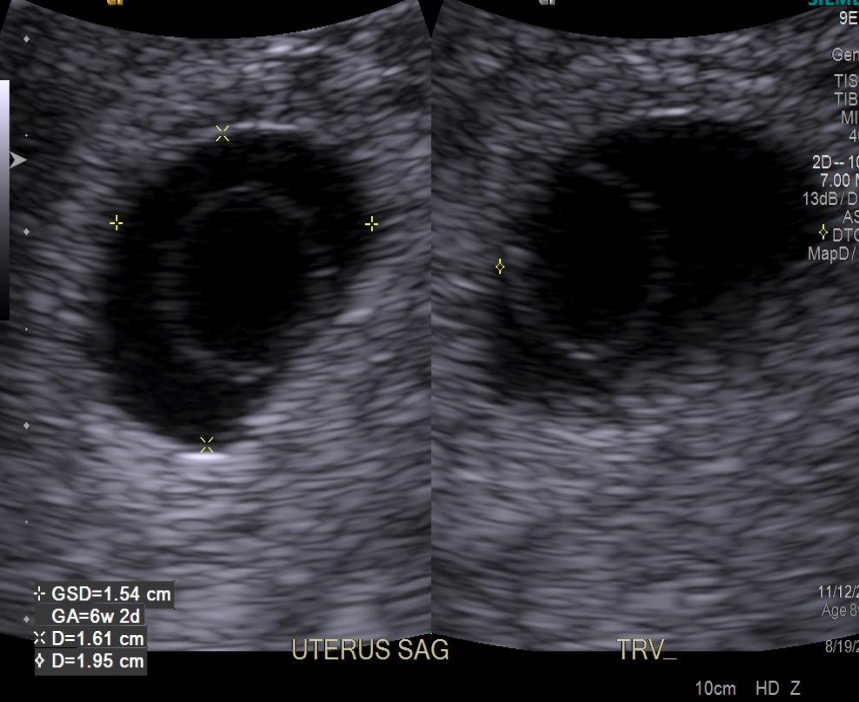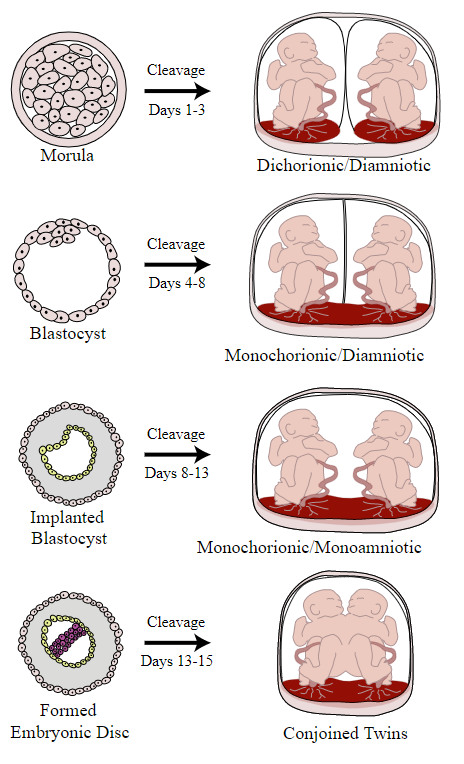Playlist
Show Playlist
Hide Playlist
Fetal Period: First Trimester
-
Slides 12-66 Fetal Period.pdf
-
Download Lecture Overview
00:01 Hello. In this final talk, we will be discussing the fetal period, the period of time after the embryonic period which takes us up to the time of birth. 00:10 During this time, the embryo has more or less formed into its complete and final form, with all the organ systems intact but is going to enlarge and the connections and interactions between those organ systems will become more and more refined. 00:27 The processes that began during the embryologic period into which we've devoted the majority of this course will come into completion at this time. 00:35 The embryo has taken on a more or less typical human appearance but it's going to continue to grow and different portions of the body will get larger or relatively smaller compared to the whole. 00:47 Problems that occur during this time tend to deal with difficulties in putting on weight leading to either prematurity or post-maturity problems. 00:55 So let's follow and see how all the events that we've studied so far, come to completion during the fetal period. 01:05 Now during the fetal period, we start numbering at roughly week 9 of development and follow it to the end of the third trimester. 01:12 During this time, crown-rump length can be used to calculate the size of the infant, but there are other measurements that are commonly used also. 01:21 Crown-heel length where are the lines are drawn from the crown of the head to the rump and down the knee, and down to the heel, to get a sense of how long the entire developing fetus is. 01:33 Bitemporal diameter, the distance from one temporal bone to the other, is also commonly used as is calculation of head circumference and femur length. 01:42 At the end of the embryonic period, the embryo's head accounts for nearly half of its overall length but as the fetal period continues, the body will elongate considerably. 01:55 The head does not get smaller, the body gets relatively larger until it takes up about one-third of the overall length of the body, and by the time of birth the head approximately one-fourth of the entire length of the body. 02:08 To calculate the time of delivery it's easiest to go from the last known menstrual period. 02:15 If we knew the exact date of fertilization we would generally calculate 38 weeks from the time of fertilization to the time of delivery because the exact date of fertilization is not commonly known physicians will calculate the expected delivery date by looking at the last known menstrual period and calculating 40 weeks, 280 days following that, and that's the date that is used to set the expected delivery time and track the progress of the infant as we move closer to the time of birth. 02:47 Now during the first trimester, in the fetal period, we're gonna start at week 9, at which time the length of the infant is'not the infant, but the fetus is roughly 2.3 cm in length. 02:59 Significant events that occur during this time is that the eyelids have met and fused, the fetus begins swallowing amniotic fluid and then filtration of it will begin thereafter. 03:10 The external genitalia begin to differentiate although they may not be distinguishable on ultrasound just yet. 03:16 The urethral folds are gonna begin fusing, even though the penis is beginning to form, the urethra has not yet fully been encapsulated by the urethra folds of the penis. 03:27 The paramesonephric ducts will fuse and meet at the vaginal plate in female fetuses and the semilunar valves of the heart are fully formed at this time. 03:38 The liver, at this time, is the major site of red blood cell formation. 03:42 As we move into week 10, the embryo has lengthened to approximately 3.1 cm in length and the intestines are visible within the umbilical cord but have began to return to the abdomen as the body has enlarged and more room has become available. 03:57 The fingernails will begin to develop and continue developing up until the time of birth. 04:02 And filtration of blood by the kidneys is going to begin as swallowing of amniotic fluid began the week before, we're gonna need to expel that fluid back into the amnion. 04:11 During week 11, we're gonna be growing fairly rapidly to 4.1 cm, and we're gonna have the coils of the intestine fully returned to the body from the umbilical cord and absorption of the fluid that's being swallowed will begin at a rapid pace followed by filtration. 04:30 During week 12, we've grown longer, approximately 5.4 cm in length. 04:35 At this time, the neck is no longer just compressed below the head but is actually elongated and is able to start moving a little more freely. 04:44 The fetus is able to react to touch at this time. 04:47 External genitalia are now distinguishable by ultrasound as male or female. 04:53 And at this time, an ultrasound examination can determine the sex of the fetus. 04:57 The primary ossification centers in the skull and long bones are present and moving to elongate those bones as the entire developmental period proceeds and red cell blood formation shifts from the liver to the spleen.
About the Lecture
The lecture Fetal Period: First Trimester by Peter Ward, PhD is from the course Conception, Implantation and Fetal Development. It contains the following chapters:
- Fetal Period
- First Trimester: Weeks 9–12
Included Quiz Questions
At the end of the embryonic period, the head accounts for how much of the crown-rump length?
- Almost 50%
- Almost 25%
- Almost 33%
- Almost 75%
- Almost 15%
Which of the following processes does not occur during the first trimester?
- Type II pneumocytes begin to secrete surfactant
- Red blood cell formation shifts from liver to spleen
- External genitalia become distinguishable as male/female via ultrasound
- Intestinal coils return to the body from the umbilical cord
- Semilunar valves of the heart become fully formed
By the end of the first trimester, what is the crown to rump length?
- 5.4 cm
- 3.1 cm
- 4.1 cm
- 2.3 cm
- 7.8 cm
Customer reviews
5,0 of 5 stars
| 5 Stars |
|
5 |
| 4 Stars |
|
0 |
| 3 Stars |
|
0 |
| 2 Stars |
|
0 |
| 1 Star |
|
0 |





